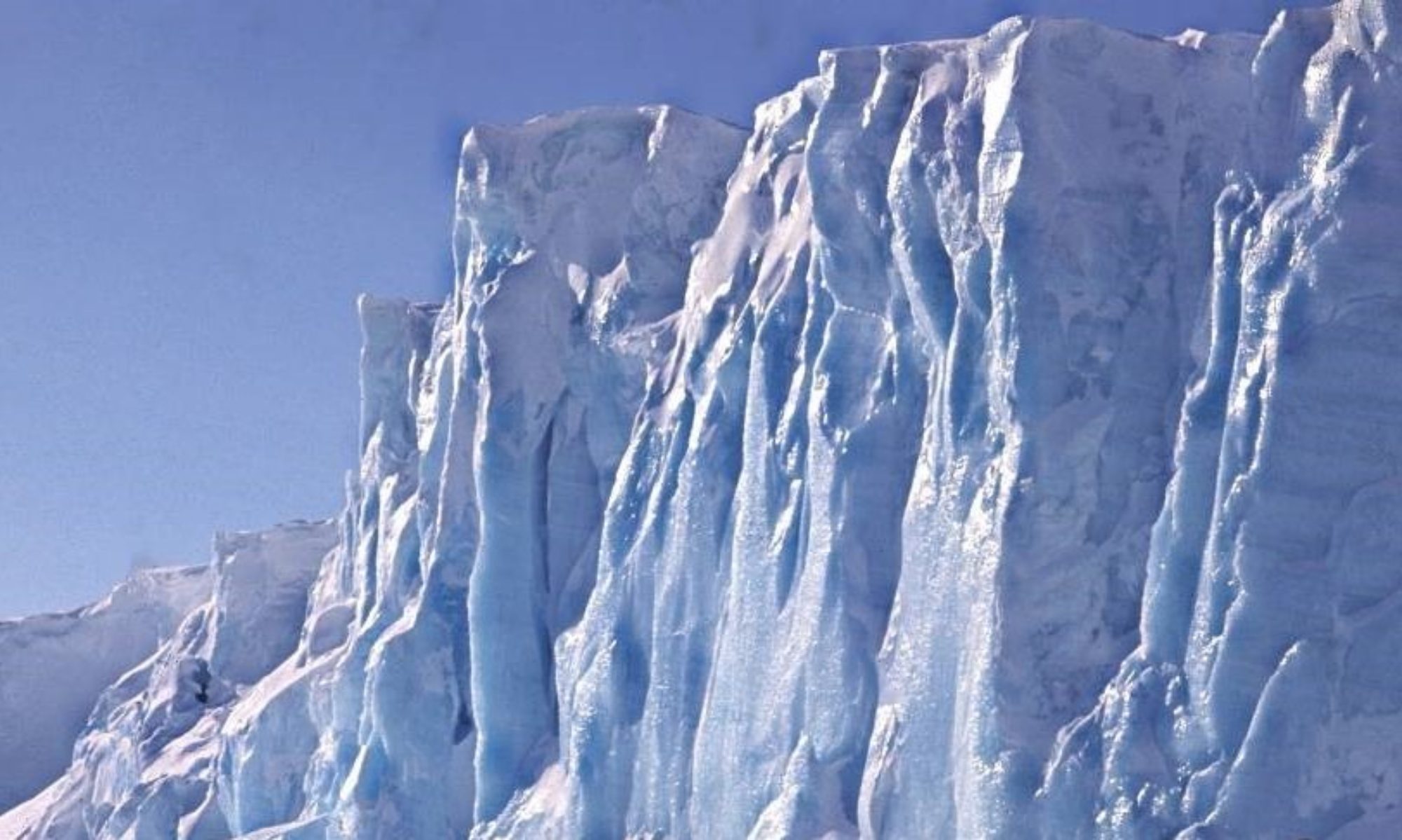Life on Stonington (continued)
It can be argued that life requires food, water, warmth and rest. So, how did we get those essential requirements at Stonington?
Our food supplies were refreshed once a year by the ships in the summer at relief time. Largely tinned or dried it was stored on base ready for use.



In 1973 we acquired a big freezer which made life a lot easier. With a bit of care and rationing, the meat just about lasted the 3 months we were on base. It was very welcome and a nice treat.
Stonington had a decent kitchen with plenty of working surfaces and a large coal fired Aga cooker at one end. Unless it was windy outside, the Aga didn’t perform that well and so we often had to use one or two primus stoves on the top to give the cooking a boost. Not the safest thing to do in the whole world though!

Sadly there was no chef so we took turns to cook for the other 16 or so men. The standard of cooking, although generally good, varied according to individual skills and/or general interest. However, there was the occasional blip. Dave Burkitt’s (GA 1973) Caribbean Casserole (tinned pineapple rings on a bed of sausages and baked beans) was something to behold, and Mick Pawley’s (BC and GA 1972) very hot spicy soup which I found impossible to eat was up there as well. Mick did redeem himself a few days later with a delicious rum trifle. One of my buddies (I won’t say who) decided on their last spell as cook to dish up soapy soup with rock hard bullet rolls. Amazingly most of us tucked into it until it became clear it was a joke. We did get the real food in the end. It seems hungry fids are easily pleased.
Which brings me on to the mouldy fruit cake dished up for smoko by Brian Jones (GA 1972). I was half way through my piece before I realised everyone else had stopped eating theirs. Fortunately I didn’t come to any harm. We quite envied neighbouring bases like Adelaide where a professional chef dished meals up of which we could only dream, like fish and chips wrapped in paper (courtesy of Alan Wearden).
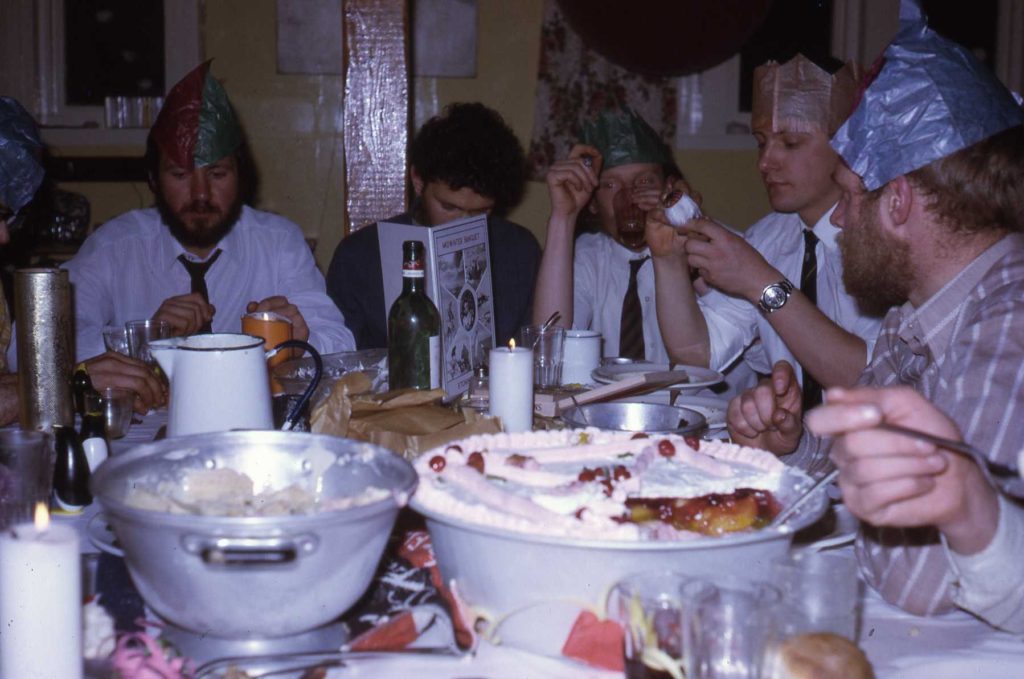
The highlight of the year was the Midwinter celebration. One year we had a trifle with 17 layers of alcohol (at least that’s how I remember it).
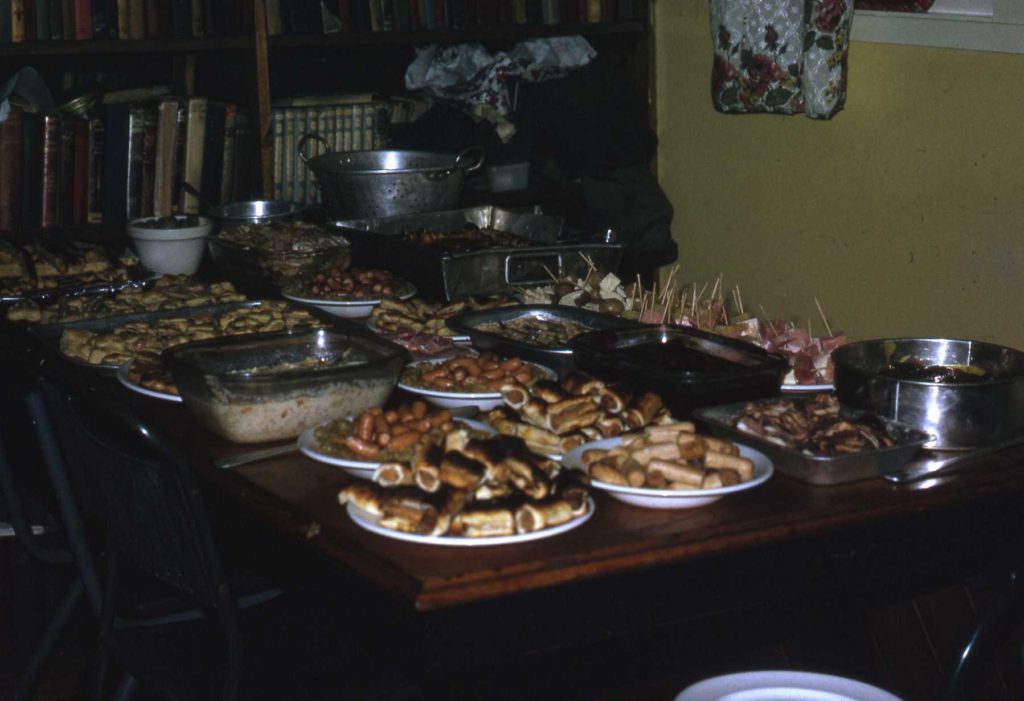
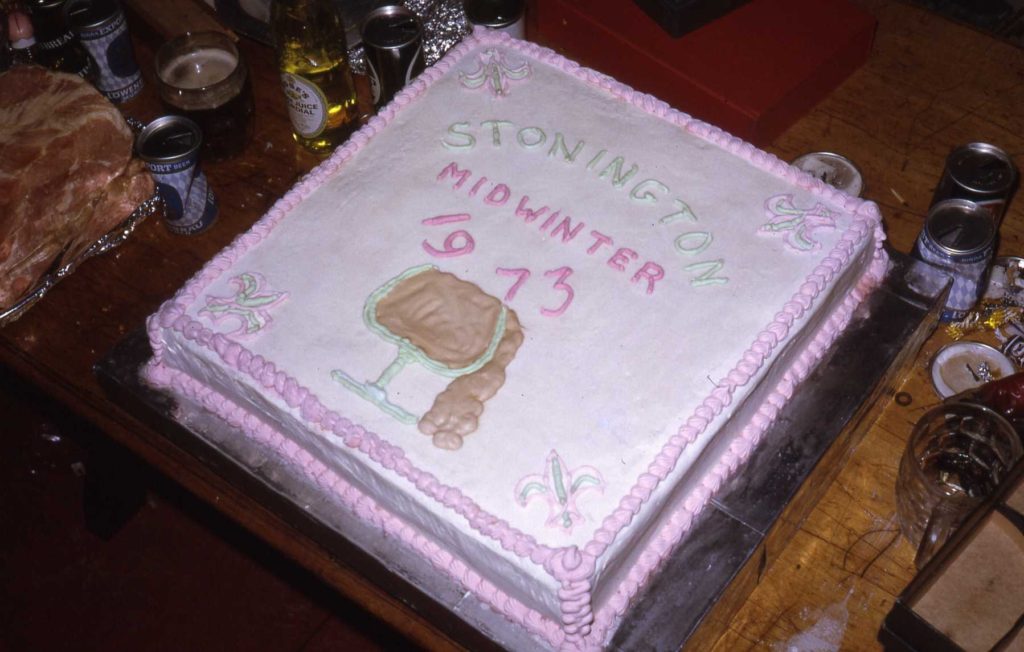
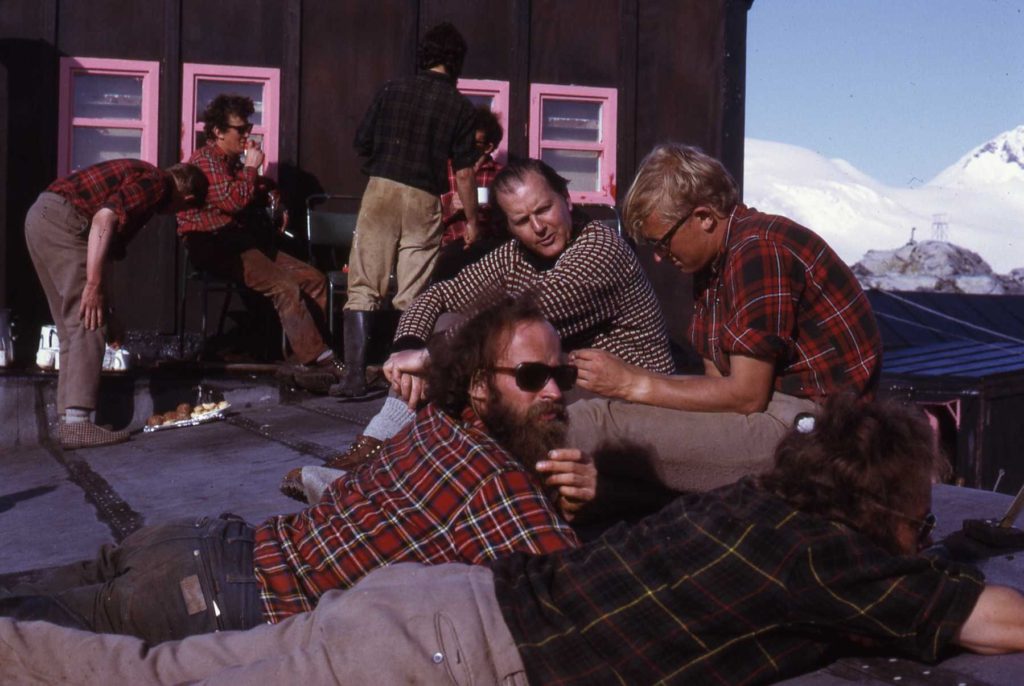
Each day work on base was punctuated by lunch, evening dinner and smoko (tea/coffee break). Sometimes on the warm days we had smoko on the roof which was a nice change from the lounge. Apart from tucking in to some of the wonderful homemade cakes and biscuits it was a great opportunity to catch up and chat.
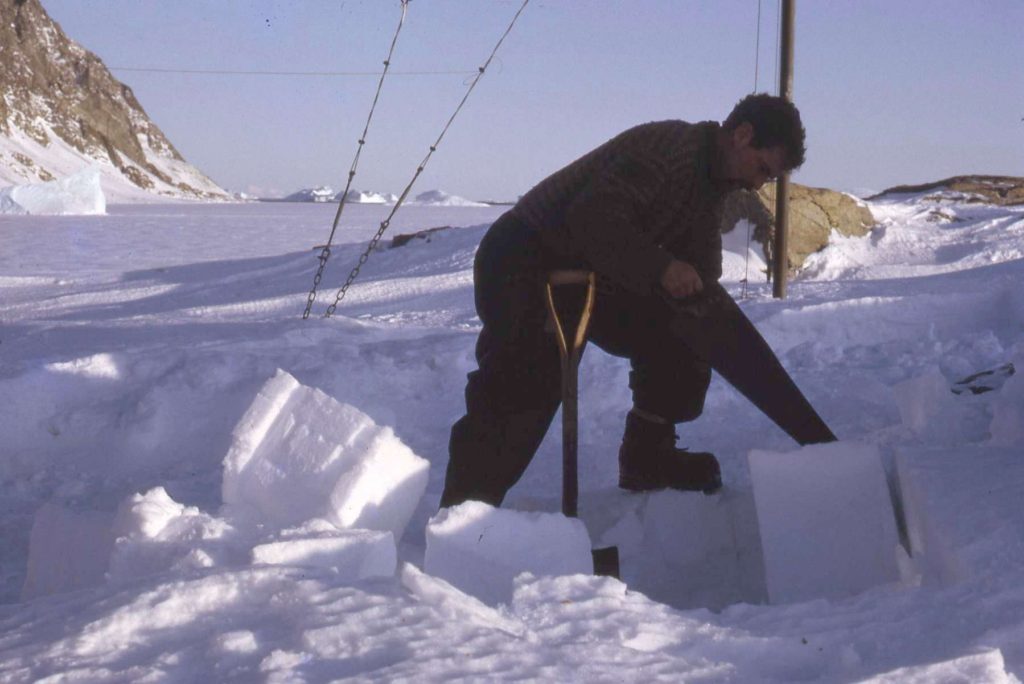
There was no running water anywhere unless you melted it first. So, cutting snow blocks or collecting glacier ice chunks washed up on the beach was a regular event.
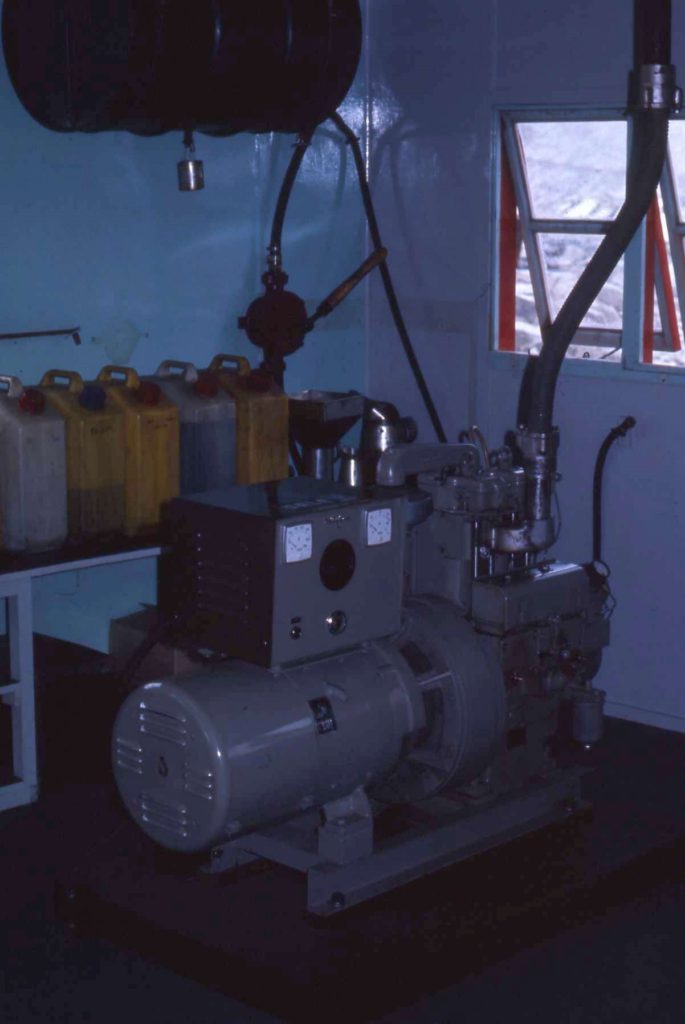
These were placed in a couple of water tanks and melted by the heat from coal fires. The latter strategically placed around the base also provided our heating.
There was no plumbing or central heating although we did have electricity provided by generators for power and lighting.
Water, hot or cold, had to be carried from place to place. The toilet was pretty basic. A chemical toilet was used for the business end and a 5 gallon pee can was hooked on the wall for the other end. It was quite tricky emptying a full pee can after a heavy nights drinking and on one memorable 1972 party night John (Rock) Hudson (Geo) dropped his spectacles into it. We had fun retrieving those.
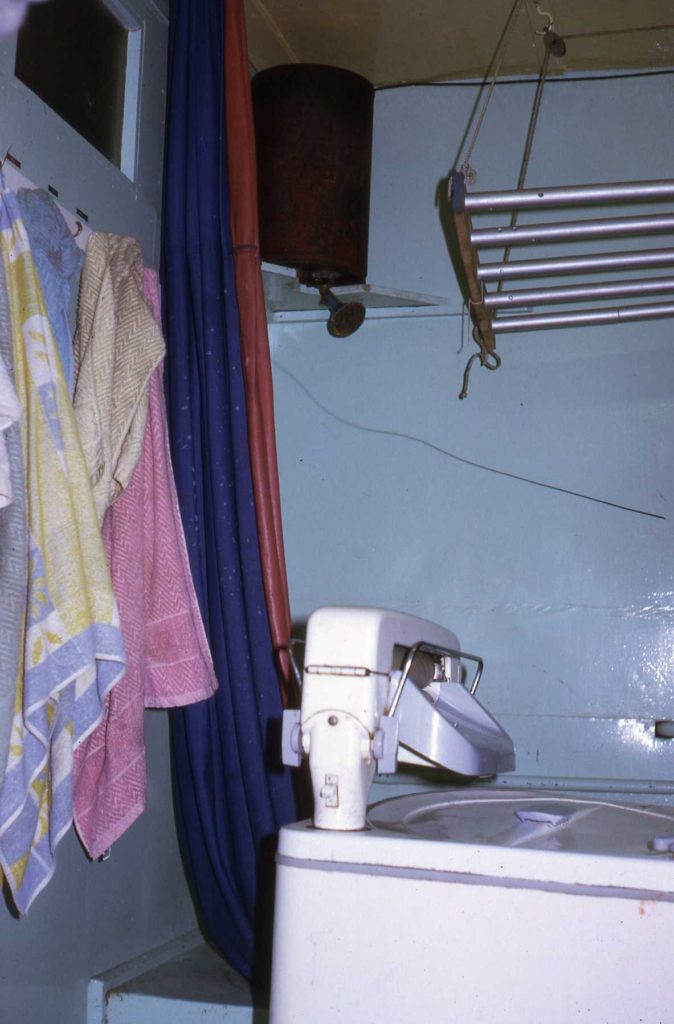
We did have a washing machine but it didn’t get used that much. The real challenge was the shower. This was another 5 gallon drum but with a tap and shower head at its base. It was placed on a high corner shelf in the bathroom.
The length of the shower depended on what weight of warm water you could lift without it pouring on your head. That said, we didn’t actually shower that much. The dogs didn’t like it if you smelt clean or wore clean clothes so what can you do?
So, we’ve covered food, water and warmth, what about rest (and relaxation) as the last essential requirement for life? Leisure activities included reading and music. The base had a small library and hi fi area in the lounge. Most people brought music gadgets, LPs, tapes etc. with them so there was no shortage of entertainment. Also, the library contained a wonderful vinyl collection including a BBC archive of vintage radio programmes.

(Photo: Dave Singleton)

I also used to like to retreat to the dark room for a bit of peace and quiet. Photography was something I had to do for my geological work but it had become a bit of a hobby. So, I found it quite relaxing printing black and whites and developing colour slides.
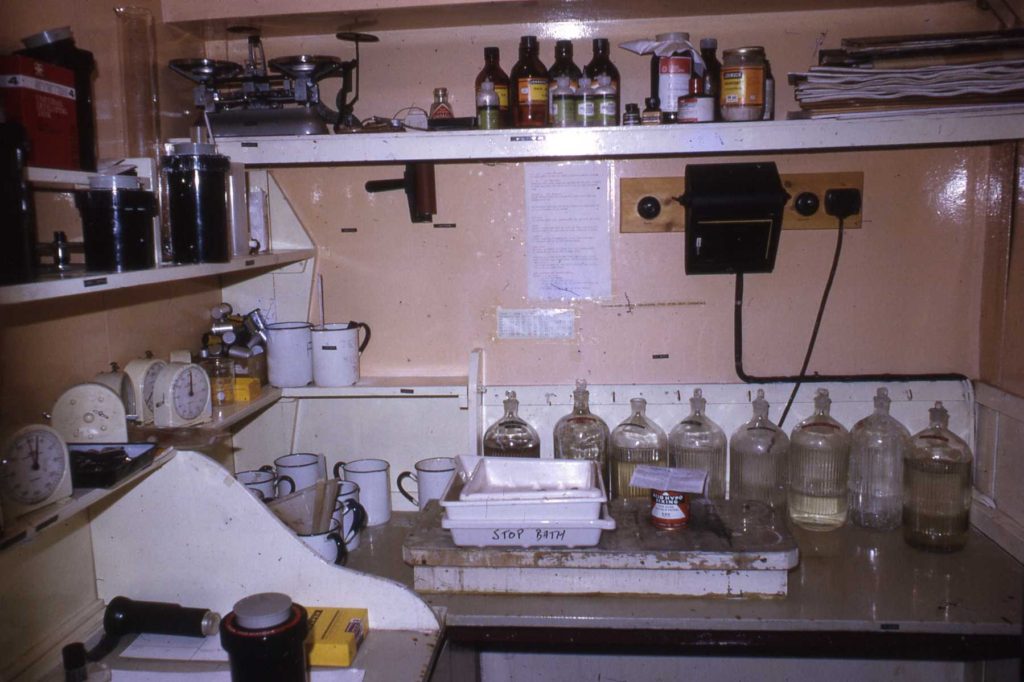

The Sledgers Bar was also a great place to relax and it wasn’t unusual for a party to just spontaneously combust. We all had an annual standing order for beer; spirits etc. and BAS also provided a small allowance a bit like getting a tot in the Royal Navy. In 1972 we had cans of beer but in 1973 we got some kegs which really livened things up. We also had 20 years-worth of Navy Rum, left from previous years.
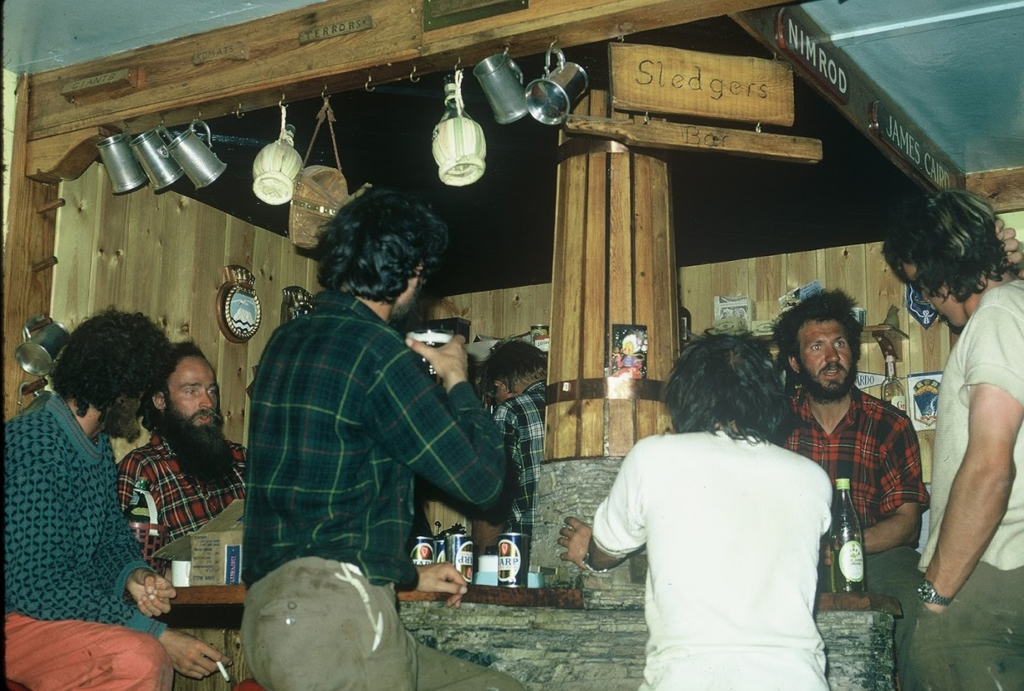


Occasionally for recreation, if the sea ice was in, some of us would venture out skijoring with two or three dogs in harness. It was quite good fun but a bit hairy at times having no foot brake. Also, we could walk over to Neny Island for a climb or get close up to some of the stranded icebergs.
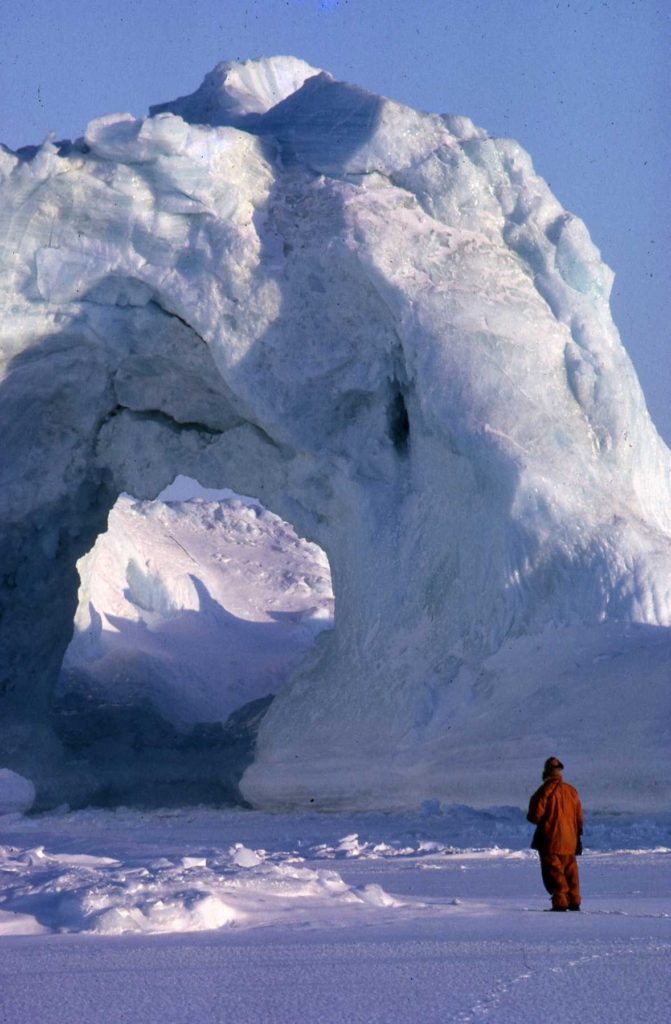

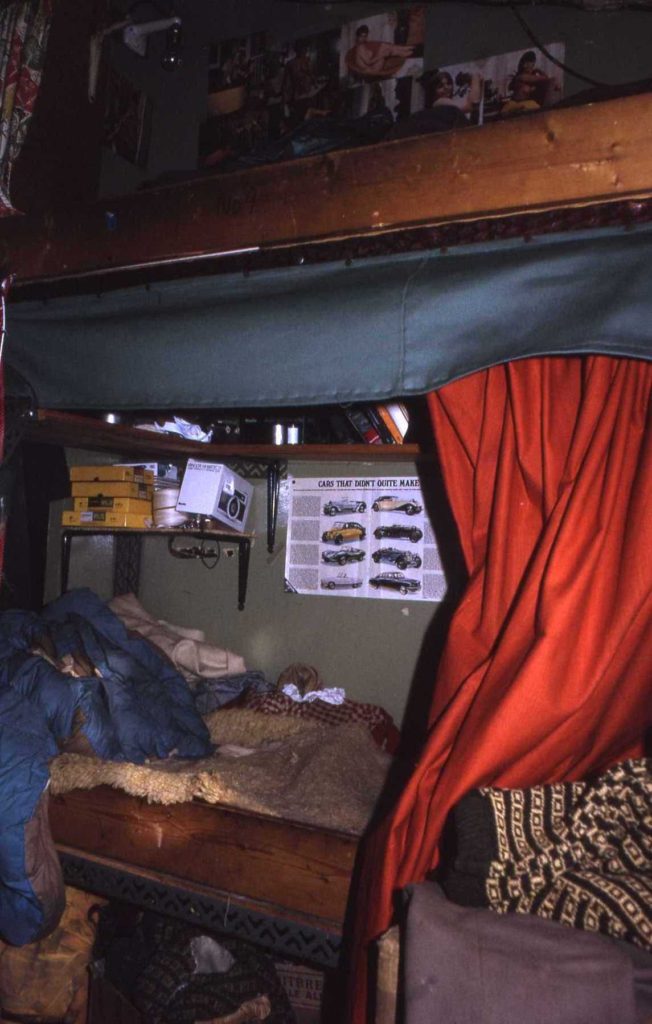
Work on base fell into two general categories: field related work and work associated with the smooth running of the base.
Field based work could be repairing or rebuilding sledge equipment and tents or looking after the dogs including veterinary care. Bob Bostelmann was the vet in 1973 but in 1972 that work was done by the dog team drivers. The nearest doctor for both years was around 80 miles away at Adelaide base so medical help for us and the dogs was a bit thin at times. Feeding the dogs and the job of chopping seal has been covered by me elsewhere (see story: ‘Annual Seal Hunt and the Dog Food Chain’).
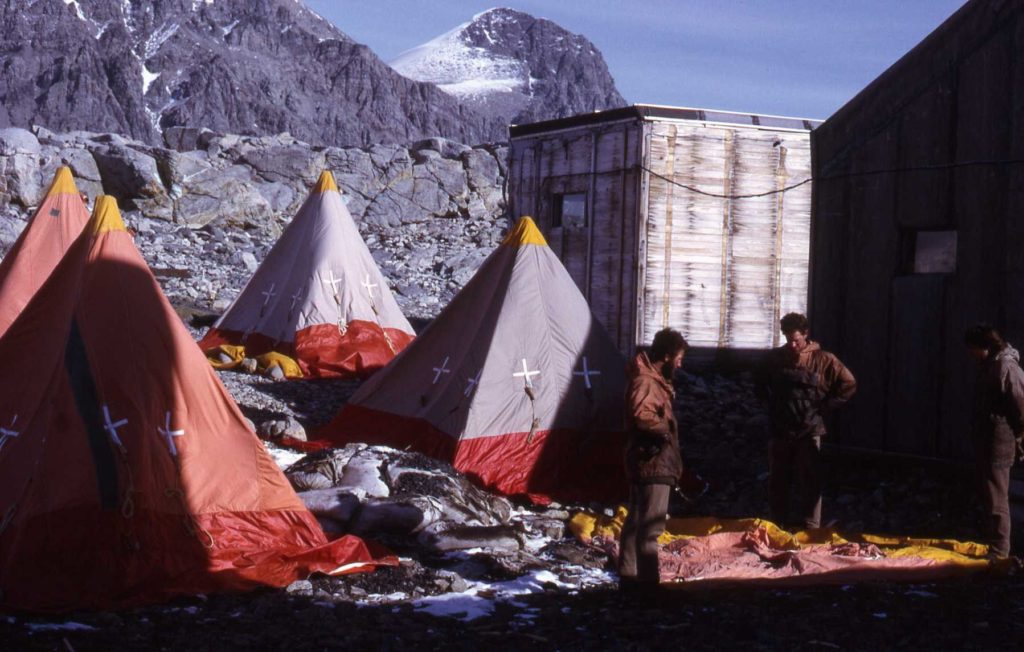
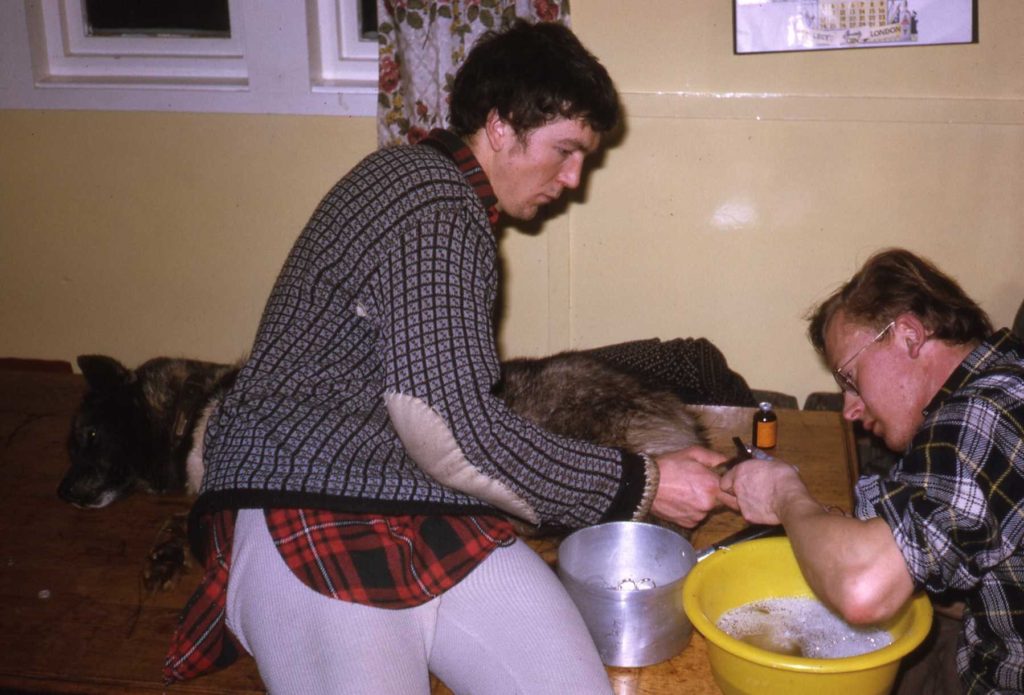
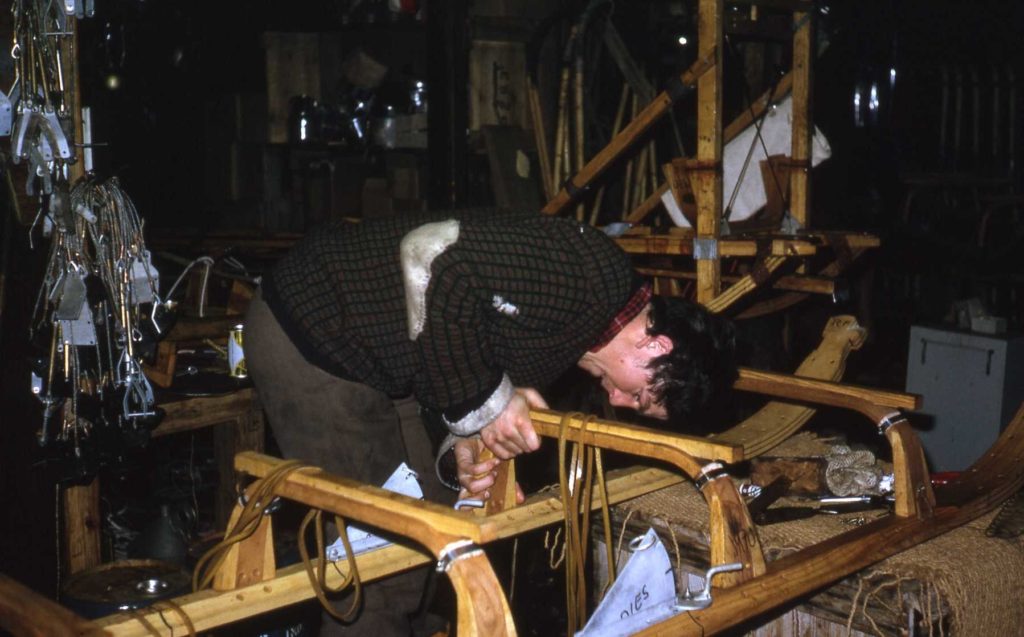

One of my personal diary entries for 14/3/1972 gives a flavour of some of the other field related activities:
“ General preparation – Mick gave us a quick chat on pulley techniques and crevasses. A real sewing class (Mick behind the bar splicing, Drummy Small (GA) also splicing, Dennis McConnell (Dentist/GA) sewing with the machine, Brian Jones darning, me sewing rescue gear). “
Most of us also had reports to write following the numerous sledging trips. These would either be scientific reports or journey reports. The geologists, geophysicists and surveyors had office space at one end of the building so most of our reports were completed there. The BC had an office to conduct the business of running the base and the GAs would work anywhere they could find a spot.
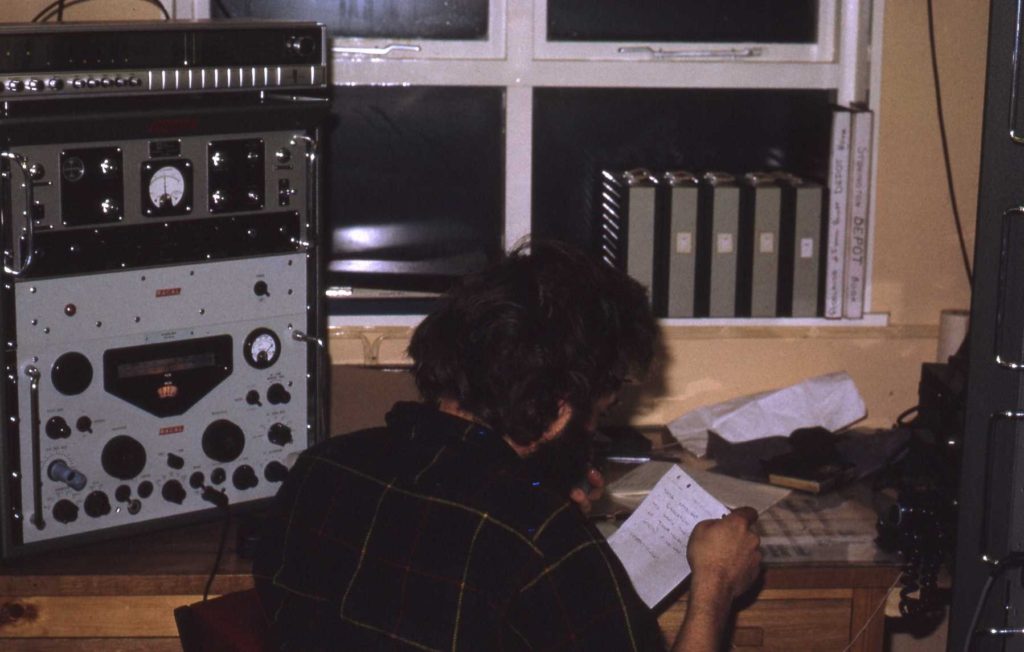
So, what about tasks necessary for running the base? For the radio operator work was the same throughout the year and a proportion of their day was always spent managing the radio schedules and telex messages between bases and between us and BAS HQ.
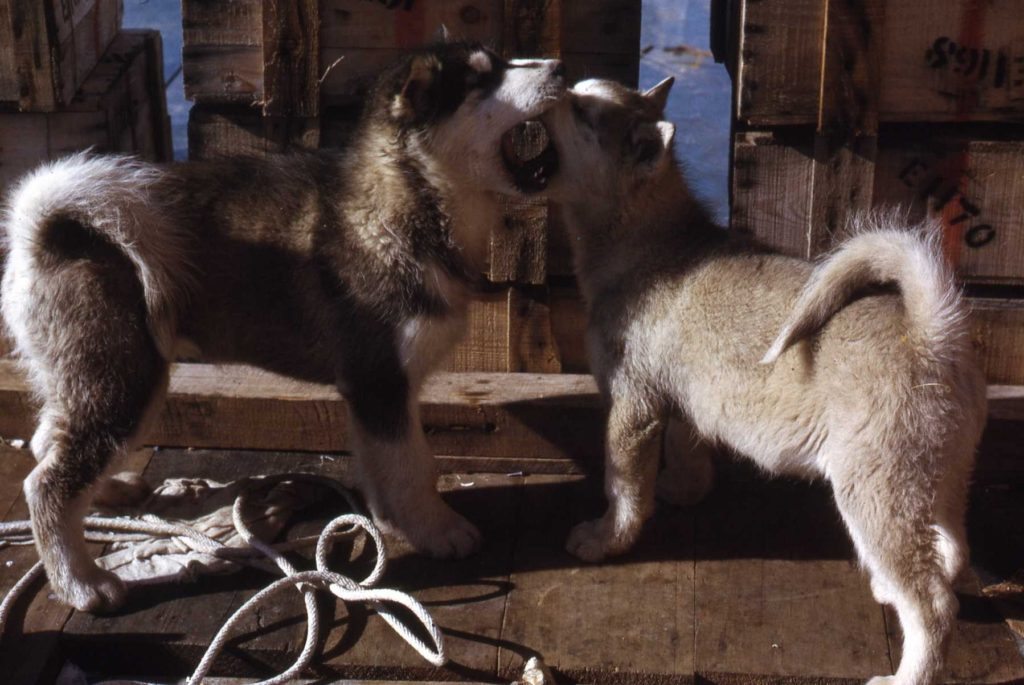
The diesel mechanic’s focus was keeping the electricity flowing. Because these two roles were tied to base they also looked after the pups and dogs left behind when we were all in the field. Occasionally they did get the odd jolly or two with the sledge parties though.
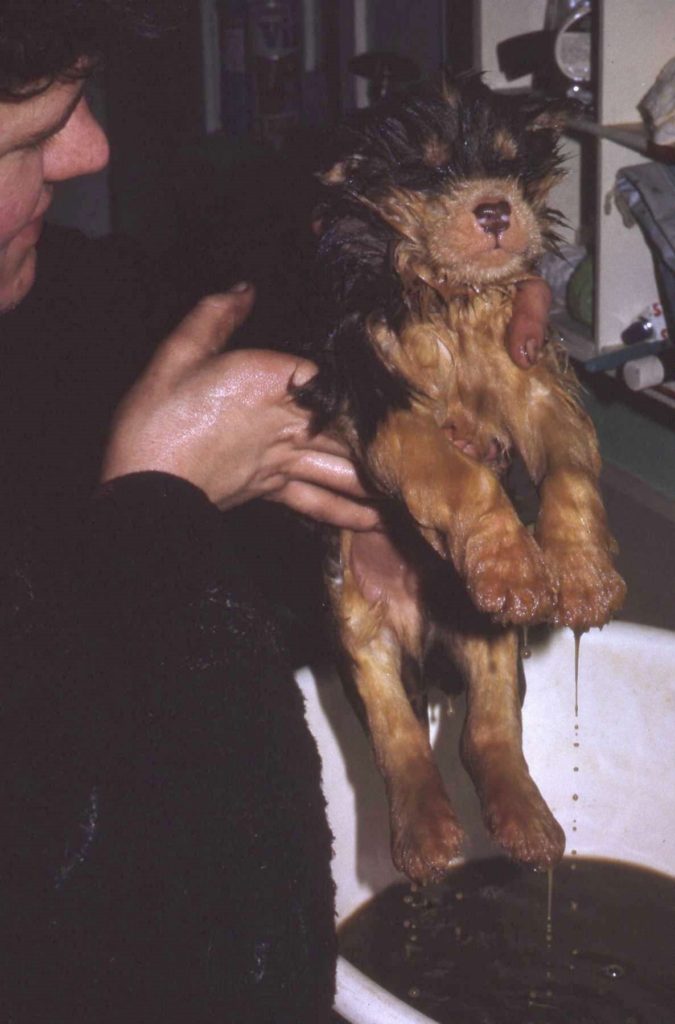
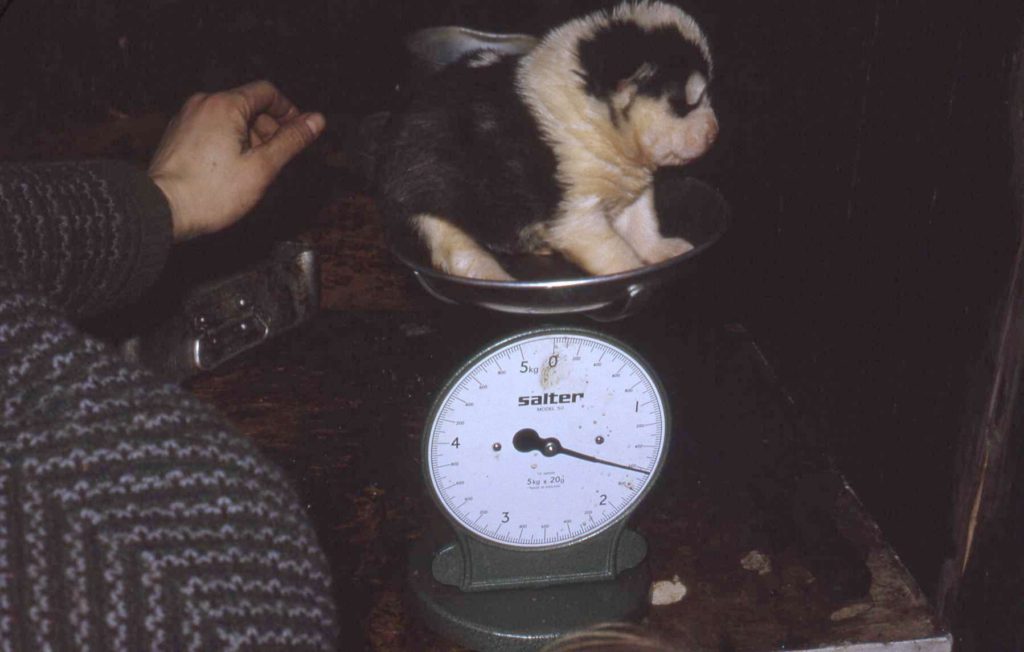

All other jobs to help run the base were allocated by the base commander. This could vary: cook of the day; gash (supporting the cook and keeping fires burning); base scrub out; coal run (carrying bags of coal from the stock pile to the bunker); gash run to the beach (getting rid of the rubbish and other waste; this was before the current environmental measures); water run; painting the base plus other building construction and maintenance work; tidying up the island and at relief time the handling and storage of incoming cargo. My lasting memory was how busy and varied life was. I don’t ever remember feeling bored. Life on base was very different from life in the field but nevertheless, equally enjoyable.

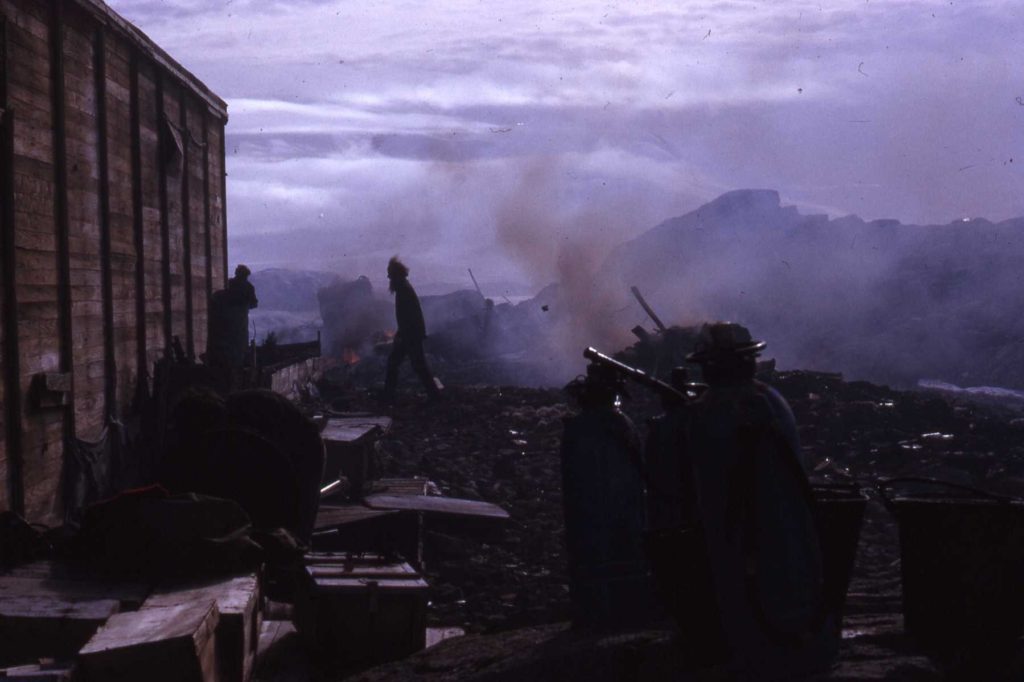
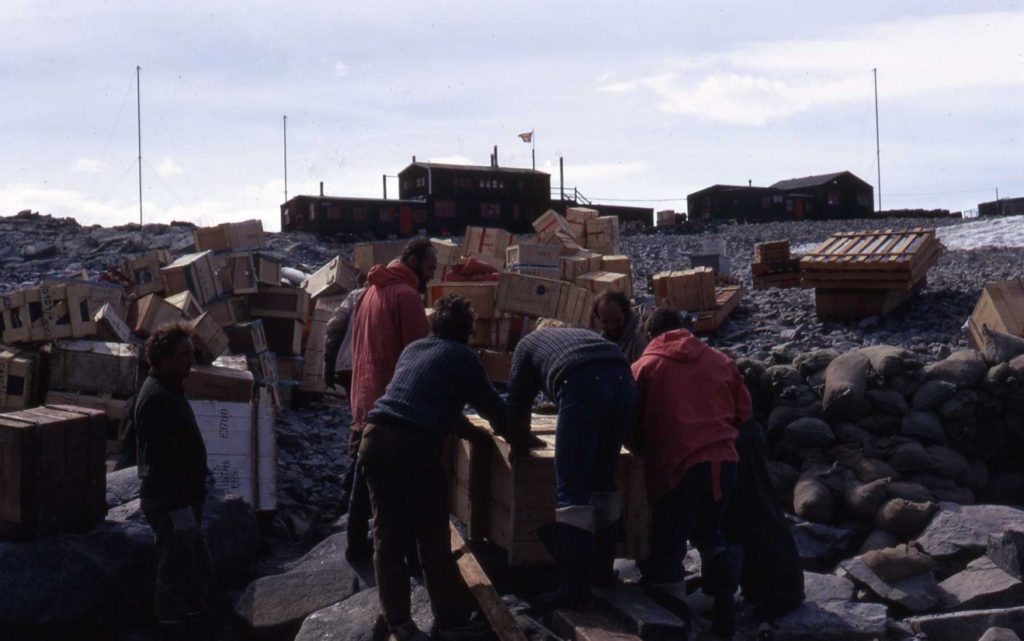
Looking back, life was very basic but in 1972 I thought I had the best job in the world. My salary went straight in the bank; there was no handling of money; accommodation and transport was free; clothing was provided; food, water, heating and electricity was also free. The only spending I did was on my annual telex order for personal items such as the Kodak photography order, LPs and of course beer. As if that wasn’t enough I was loaned a wonderful set of dogs to get me around in what must be the most beautiful and photogenic place on earth. On top of that I got to spend time with a unique set of work mates many of whom became lifelong friends. What’s not to like!
Dave Singleton (Geologist)
Stonington Base E 1972 and 1973
